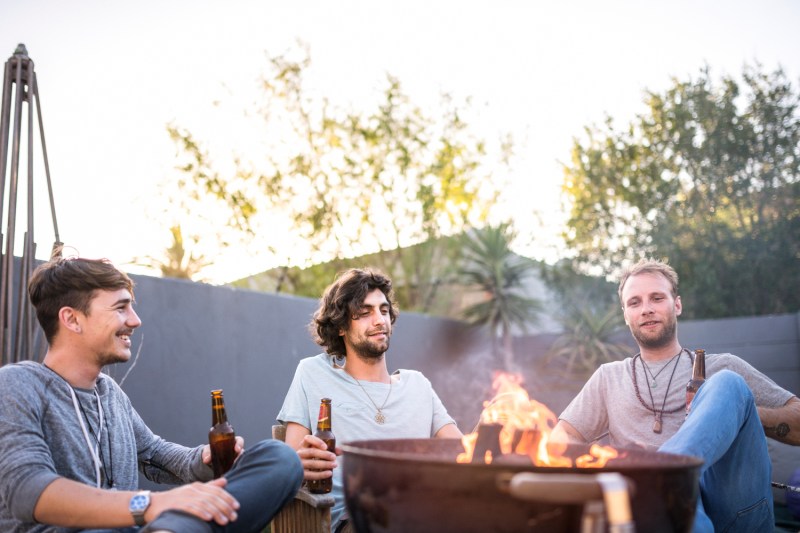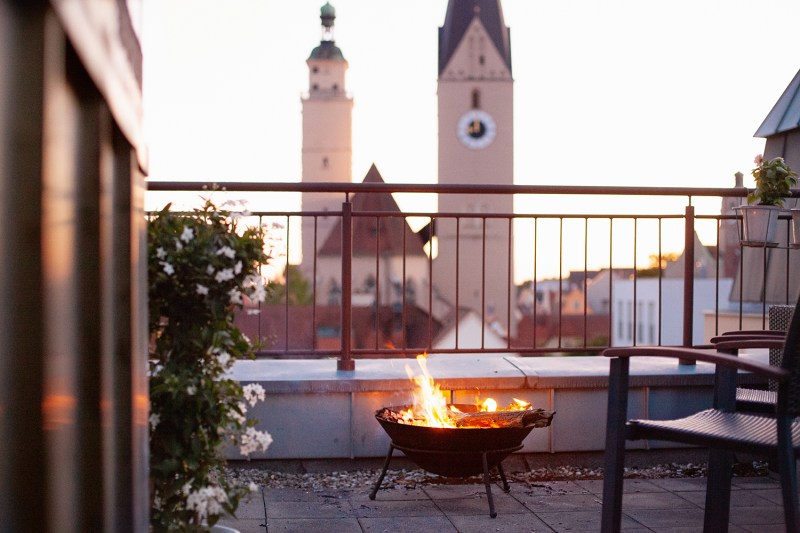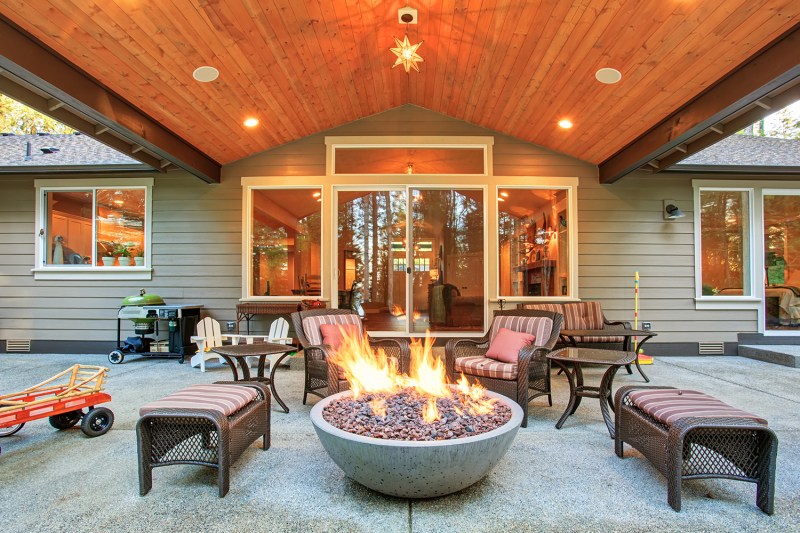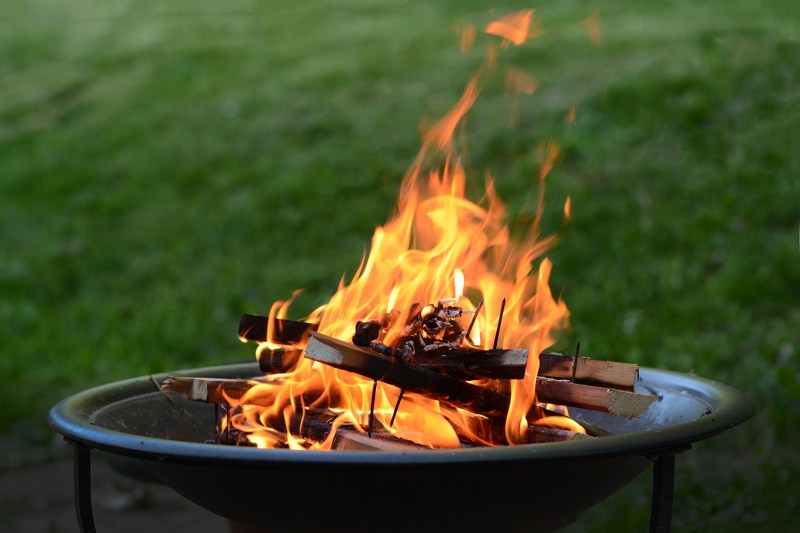
There’s nothing like ending the day in the backyard around the fire pit. Imagine yourself sitting in front of a nice little fire, maybe with a bottle of your favorite whiskey or your new favorite cigar. The day and evening are winding down, and you’re enjoying the last few moments of silence before you head to bed. The trouble is that you’re not sure what type of fire pit you need or want.
Now that it’s almost summer, it’s time to turn your backyard into an oasis and imagine those cool summer nights around your backyard fire pit. If you’ve been wanting to add a fire pit to your home, there are always a few questions to ask before you jump in and purchase a piece of home furniture. Here are some tips to keep in mind when choosing the best fire pit for your backyard.
Safety concerns when choosing a fire pit

One of the first questions you might have is: Can you have open fires where you live? Some locations or cities don’t always allow open flames. The main things to consider for safety reasons are location and flame type.
- Location: The fire pit needs to be away from combustible materials. This includes flammable liquids, awnings, sheds, your house, and even tents. You can, of course, store your fire pit when not in use and the fire has gone out, but you shouldn’t have it burning next to these things.
- Open flame type: Can you burn wood where you live, or would it be better to use a gas fire pit? Wood burning can spark and ignite the flammable material we just talked about, or it can catch a nearby tree on fire.
It may sound scary, but truthfully, if used correctly, the fire pit can be safe almost anywhere. You just have to plan out where it’s going to be safely used because you don’t want to ever have to worry about putting out a fire.
Usually, it’s not too big of an issue if you live in a house, but apartment dwellings and condo living aren’t always ideal for fire pits because you need adequate ventilation and outdoor space. Some places even have no-burning zones or times of the year when fires are banned, no matter how large or small.
How do I choose a fire pit?
Cost and size

Choosing a fire pit is a matter of personal preference. You should choose a style that fits your budget and that is the correct size for the location you decided to place it in. When it comes to cost, there are fire pits that fit just about any budget and depend on the size and style you choose.
If you are going to have a built-in fire pit, the optimal size is 36 to 44 inches in diameter and about 10 inches tall from the ground up. If you are going to use a portable fire pit, then the optimal size is anywhere from 30 to 40 inches in diameter and about 12 to 16 inches tall, which is perfect for cozying up in a patio chair.
Style and type

Built-in fire pits are usually dug into the ground, filled with sand or gravel, and topped with a brick or concrete wall around the fire pit hole. There are some great do-it-yourself fire pit kits for this style, but beware: It’s a weekend project.
On the other hand, there are also free-standing and portable fire pits. These moveable fire pits are very popular and come in many different shapes and sizes. Many of the fire pits are designed as table-shaped, bowl-shaped, or rings. You can even find some shapes like columns, chimineas, and even fireplace styles.
Material

What your fire pit is made of will also determine its durability. It will also define how moveable or portable your fire pit will be. A brick or concrete fire pit will more than likely be a permanent installation, whereas a steel or metal fire pit can be moved a little more easily.
Fuel type

The fuel type of your fire pit will be another big factor. A lot of wood-burning fire pits are economical but face a lot of criticism due to their emissions and fire bans — not to mention having to store firewood. Natural gas fire pits are environmentally friendly because they burn the cleanest, they’re easy to maintain, and they have the cheapest cost.
The best part is that you don’t have to worry about refilling the natural gas. Liquid propane fire pits are similar to natural gas, but they do burn a little less cleanly by creating a small amount of soot. They are more mobile and still easy to maintain, but you will need to refill the propane tank at your local store.
Tips for fire pit maintenance

No matter which fire pit style or fuel type you choose, there will always be a certain amount of maintenance needed. You purchased a product that will last a long time, and you need to make sure it stays clean, safe, and operating efficiently.
For a wood-burning fire pit, you will need to clean out the ash regularly. Wood ash is great for your lawn, garden, or flower beds. It has a lot of nutrients and is equally perfect for composting piles. Once you remove the ash, you will want to wash the fire pit with soap and warm water. When cleaning any gas fire pit, use warm, soapy water and a sponge or damp cloth. Be sure to wash away any soot buildup in the basin and clean near the burner so it can keep the fuel flowing properly.
Maintenance tips for different materials
- Metal fire pits: These are susceptible to rust. After cleaning, thoroughly dry your fire pit to prevent rust. You can also season it with a thin layer of high-temperature-resistant oil for additional protection. Look for paint specifically designed for high heat to further prevent rust.
- Cast-iron grates: Like metal fire pits, cast-iron grates can rust. Clean them with a wire brush and hot soapy water. You can also season them with a thin layer of cooking oil to prevent rust.
- Stone or brick fire pits: While less prone to rust, stone or brick fire pits can develop cracks over time. Inspect them regularly and address any cracks promptly to prevent further damage. You can use a sealant specifically designed for outdoor fireplaces and fire pits to help prevent cracks.
One last thing — purchase a protective cover for your fire pit. The cover will prevent rust and discoloration as well as protect it from weather such as rain, sun, and snow. The cover is essential to prolonging the life of your fire pit.



